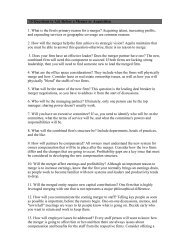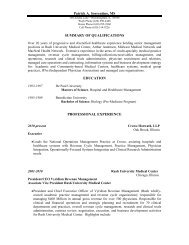Interpersonal Style - CPAReport
Interpersonal Style - CPAReport
Interpersonal Style - CPAReport
You also want an ePaper? Increase the reach of your titles
YUMPU automatically turns print PDFs into web optimized ePapers that Google loves.
Managing RelationshipsSummary of <strong>Style</strong> Elements<strong>Style</strong> Pattern I Pattern II Pattern III Pattern IVBasic Orientation Action Relationships Intuition ThinkingUse of Time Immediate Present Future HistoricalRelating to Others Task first Key priority Likes an audience Cautious actionsTasks Primary importance Relationships mostimportantDecision-making Quick, goal oriented Slow, peopleorientedMust be excitingFast, intuitionorientedProcess takesprioritySlow, processorientedAction planningquestionsMaximum Efforttoward othersWhat? Why? Who? How?Control Relationships Involvement ProcessFirst Priority Achievement Teamwork Leadership PlanningSource of Tension Inaction Conflict Isolation InvolvementMajor Strength Decisive Supportive Enthusiastic ThoroughMajor WeaknessTends to beInsensitive to other’sfeelingsTends to avoidsconfrontationTends to actimpulsivelyMay be reluctant toimproviseFallback Behavior Autocratic Acquiesce Attack AvoidTeamworkEvery team has a common goal or mission along with structures and processes that make it function. The success of a team,however, depends on mutual cooperation and support. As you review the chart above, it should be apparent that the strength ofone style may be the weakness of another. An awareness of each other’s styles helps you to appreciate the potential of eachindividual and how he or she can not only contribute to the success of the team, but also make work much more fun!2013 Cook Consulting chad@cookconsulting.biz 14






